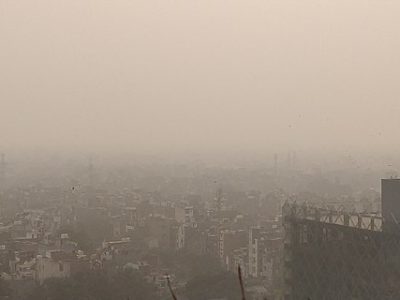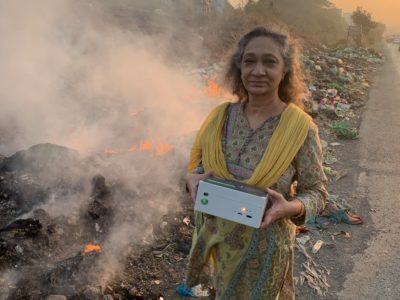Not The Winds Of Change We Wanted
Bombay’s recent air quality crisis shows us our future

For several years, India’s capital of Delhi has been synonymous with awful air quality: just living there is the equivalent of smoking nearly 2,000 cigarettes a year.
So it shocked me when the Indian Express reported that last week, Bombay’s air was even worse than Delhi’s.
Delhi’s AQI last week was an abysmal 263; but Bombay’s was a truly horrific 315. Bombay usually has much better air than Delhi, because the capital’s local environment holds pollutants so effectively: it is one of the world’s best petri dishes for awful air. (Check out Siddharth Singh’s wonderful book, The Great Smog Of India, for more).
What gives?
According to the Express, the answer is straightforward: the wind stopped.
Bombay is on the coast, and the prevailing winds usually push pollutants out into the Arabian Sea. But last week, these winds stopped, leaving a blanket of pollution over the city.

Okay. Rare occurrence. Things got better this week. Move right along. But not so fast. This isn’t about a freak weather pattern: it is about climate.
Wind is famously difficult to model, but climate researchers have concluded that climate change is stopping wind and changing wind patterns. It isn’t obvious why wind happens at all. One principal cause is the interaction of hot and cold air: at its peak, that is what causes a cyclone. But given how quickly the Arctic is warming, there is less super-cold air, which leads to less wind, which leads to what the IPCC has called “global stilling.”
This isn’t always the cause: sometimes changes lead to greater winds, as occurred in New Mexico earlier this year, causing massive wildfires and – of course – worse air quality.
But I think that the overall point is a crucial one: you can’t run from climate change. There is no safe place. Given the massive instability that climate change causes to the global weather system, places that appear safe can be highly dangerous. There is no way out but to develop resilience and reduce emissions.
Hopefully, we will be smarter than early Los Angeles policymakers. As Dr. Scott Dewey details in his wonderful book about early southern California air quality policy, Don’t Breathe The Air: Air Pollution and U.S. Environmental Politics, 1945-1970, several proposed building massive fans on the Santa Monica Mountains to blow the smog out to sea. Fortunately, that idea was killed, and we adopted the catalytic converter (over the objections of right-wingers).
But if anything, our policymaking has gotten stupider over the last several decades. It won’t work. The old phrase is still true: there is no free lunch.







Reader Comments